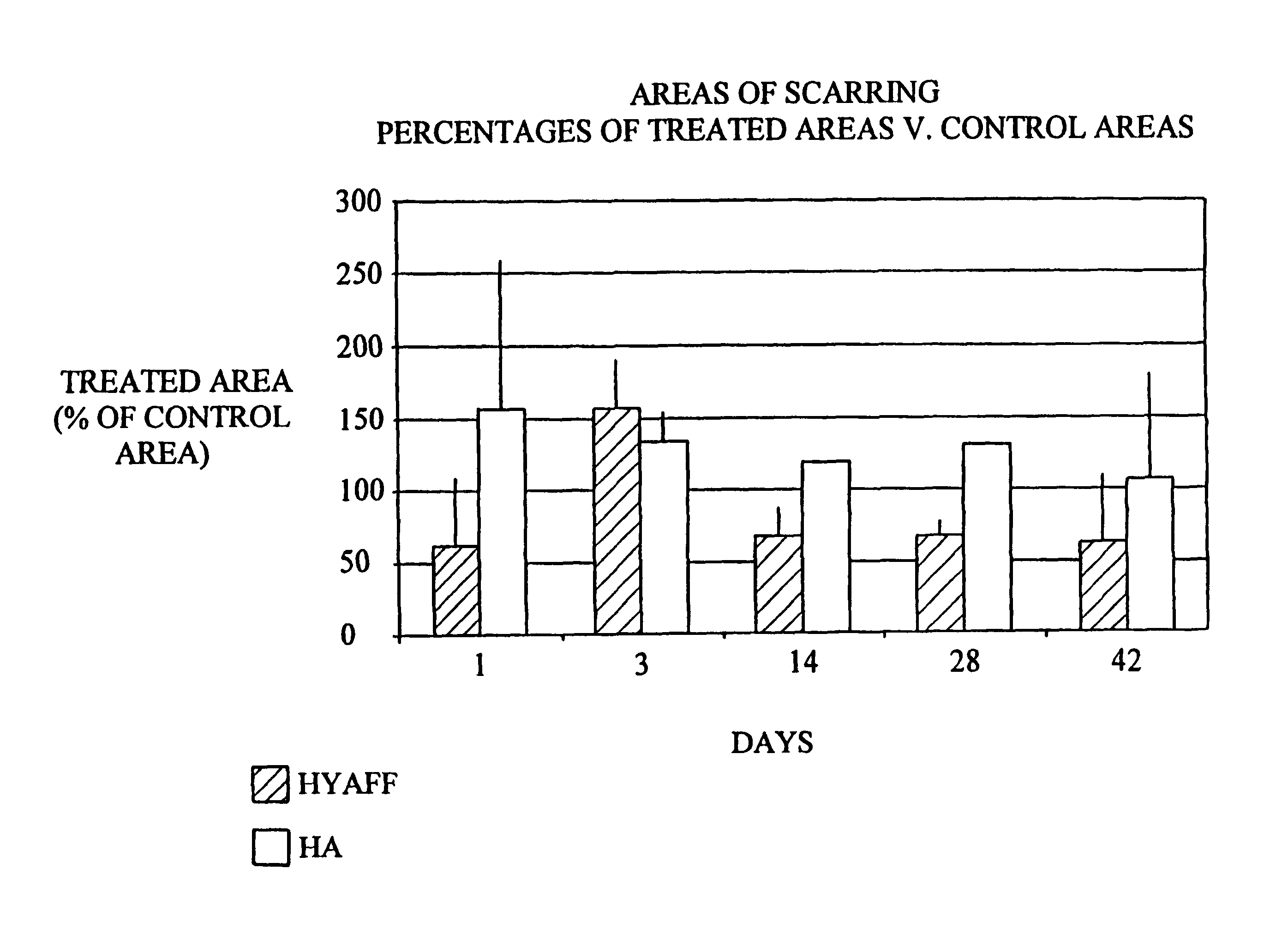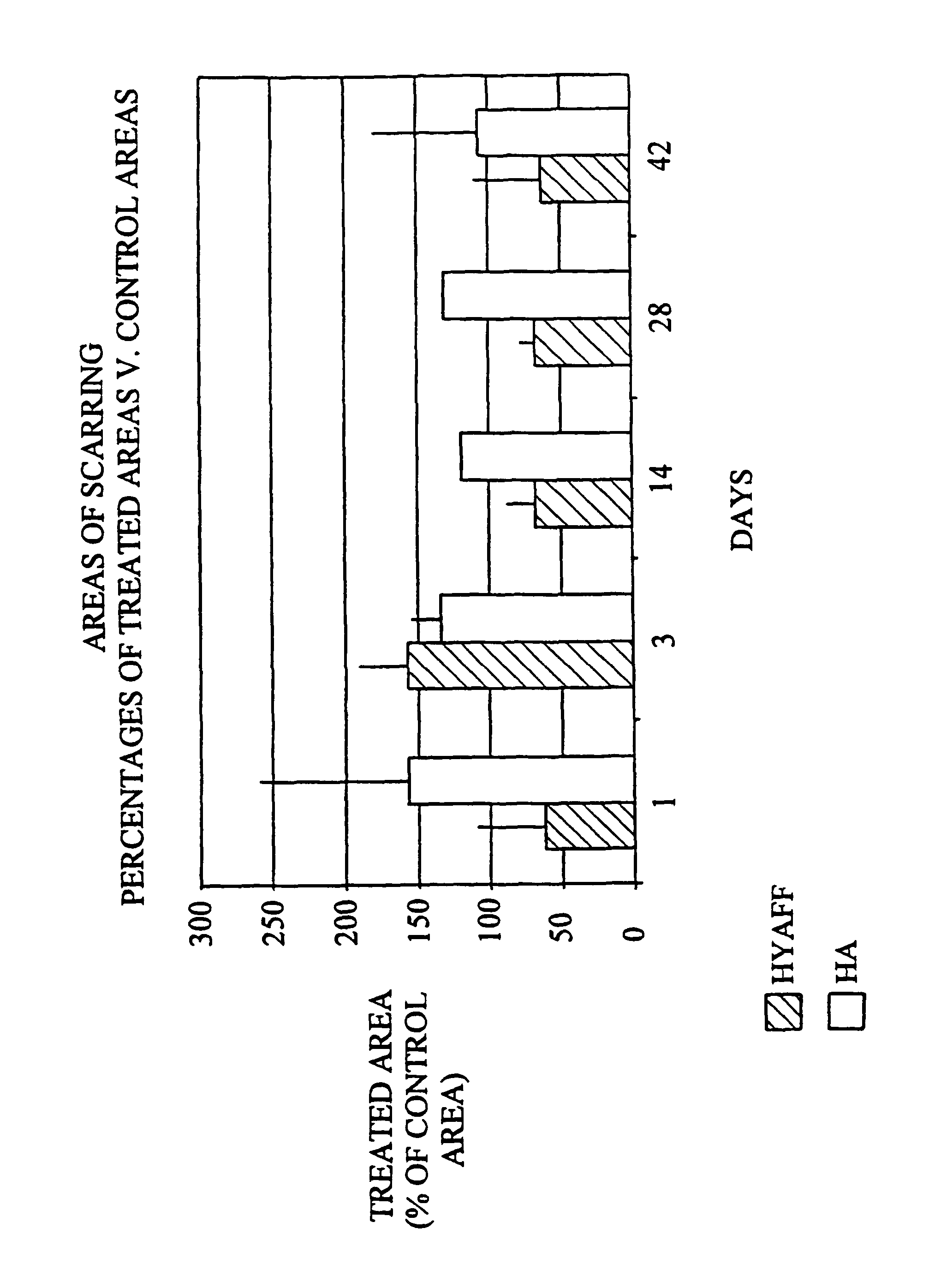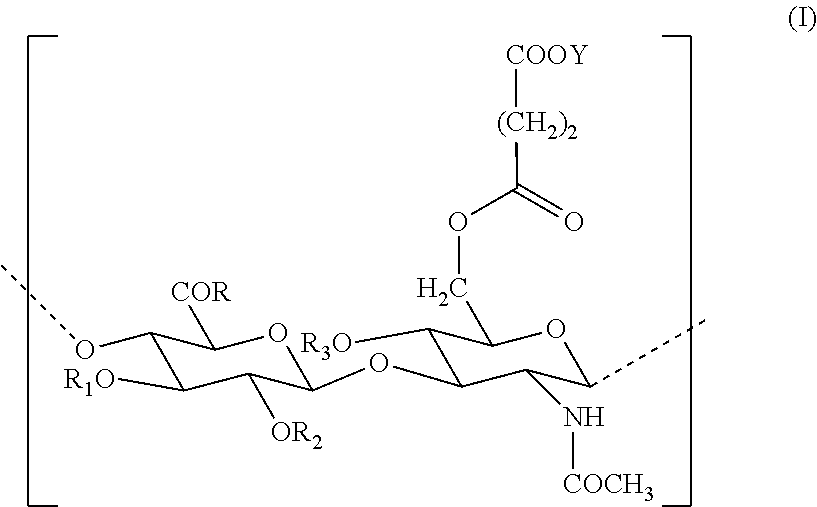Use of hyaluronic acid derivatives in pharmaceutical preparations and biomaterials for the prevention and treatment of cutaneous scars
a technology of hyaluronic acid and pharmaceutical preparations, which is applied in the direction of bandages, hair cosmetics, drug compositions, etc., can solve the problems of scar tissue lack, scarring process is very long, and scar tissue may lack pigmentation or too much,
- Summary
- Abstract
- Description
- Claims
- Application Information
AI Technical Summary
Problems solved by technology
Method used
Image
Examples
example 1
[0103]Decrease in the area of cutaneous scarring in a rat model following treatment of the wound with the benzyl ester of hyaluronic acid (HYAFF® 11) with 75% esterification and hyaluronic acid / Hyalastine® fraction).
[0104]The animals were sedated by intramuscular injection of ketamine / xilazine (0.1 mg / g or 2.5 ml of solution). Anesthesia by the inhalation of metophane was also performed and the breathing rate was monitored to ensure sufficient ventilation. The backs of the animals wee shaved, washed and disinfected with chlorhexidine and iodate solution.
[0105]A maximum of four full-thickness wounds were performed on each animal, using a punch with a 6-mm diameter.
[0106]The wounds were treated as described in Table 1:
[0107]
Number of Groupstreated sitesTreatment118Partial benzyl ester of hyaluronic acidHYAFF ® 11p 75% in the form of a non-woven fabric218Hyaluronic acid (60 mg / ml)hyaluronic acid Hyalastine ® fraction (EP 0 138 572 B1)HYAFF ® 11p 75% in the form of a nonwoven fabric (U....
PUM
| Property | Measurement | Unit |
|---|---|---|
| Fraction | aaaaa | aaaaa |
| Fraction | aaaaa | aaaaa |
| Antimicrobial properties | aaaaa | aaaaa |
Abstract
Description
Claims
Application Information
 Login to View More
Login to View More - R&D
- Intellectual Property
- Life Sciences
- Materials
- Tech Scout
- Unparalleled Data Quality
- Higher Quality Content
- 60% Fewer Hallucinations
Browse by: Latest US Patents, China's latest patents, Technical Efficacy Thesaurus, Application Domain, Technology Topic, Popular Technical Reports.
© 2025 PatSnap. All rights reserved.Legal|Privacy policy|Modern Slavery Act Transparency Statement|Sitemap|About US| Contact US: help@patsnap.com



